
Napalm, Birthed in Harvard’s Basement
Who bears responsibility for the millions of deaths napalm caused: the Harvard scientists who created it, hoping their efforts would help end WWII? Harvard for supporting the research and partnering with the military? Or are the weapon’s inventors exempt, with the blame placed solely on those who authorized its use? And what — if anything — should the University do now to acknowledge the role they played?Harvard’s Ohiri Field, which sits across the Charles River in Lower Allston, has all the markings of an ordinary university facility. On any given day, soccer players stretch on the grass beneath the sun, Business School affiliates chat lively en route to classes, and a dynamic mix of tourists and residents stroll along, shadowed by the Harvard Stadium.
For nearly two years, I walked by it without a glance — until one mid-September morning when a friend made a passing comment as we walked along the street that flanked the field. “Did you know napalm was first tested here?” he asked, gesturing toward the expanse of green. Little did he know, he set my world spinning.
Napalm is one of history’s deadliest weapons, its story intertwining with that of military America. Reaching temperatures of more than 5,000 degrees Fahrenheit (by comparison, water boils at 212 degrees), it adheres to skin and burns down to the bone.
During World War II, United States forces used napalm to incinerate 64 Japanese cities, killing more Japanese people than the atomic bombs. Napalm also devastated Germany; its deadly heat baked soldiers hiding in bunkers, and the Allies dropped an estimated 3.4 kilotons of napalm bombs on Dresden, killing up to 135,000 civilians.
From Korea to Iraq, napalm has served most major military conflicts since the 1940s. But its controversial legacy was made in Vietnam, where its use plunged the country into a fiery hell and galvanized the U.S. anti-war movement.
But for me, napalm extends far beyond the bold lines of history textbooks. It holds a personal place at home.
Coming from a line of Vietnam War refugees — my parents, fifteen aunts and uncles, and four grandparents — harrowing anecdotes of violence, corruption, and hardship pervaded my childhood. Bedtime stories and dinnertime tales taught me that more than three decades ago, my grandfather was imprisoned in a re-education camp, my mother was constantly hungry, and my father was unable to tell whether the loud noises he heard coming from the street were popcorn vendors or bombs.
My family did their best to live, until they couldn’t and realized that the ocean was safer than the war-torn land. So they planned, saved, and bribed. They dressed in the darkest black to camouflage with the night and slipped to the shores, where small fishing boats packed hundreds over capacity were docked. Somehow, they survived the week-long journey, with nothing but stars and prayer to guide them through the pirate-infested waters. Up to 400,000 boat people didn’t.
I’ve long understood that weapons of mass destruction like napalm have shaped the trajectory of my heritage — that their destruction played into my family’s choice to toss their fates into the sea. What I didn’t know was the first chapter of the violent legacy I’ve inherited began at my institution: Harvard.
I almost couldn’t believe it. I associate napalm with the unspeakable, unthinkable horrors of war, like the 1968 Mỹ Lai massacre where U.S. troops mass murdered hundreds of unarmed South Vietnamese civilians. I associate napalm with cover-ups, unchecked power, immeasurable suffering, and eyes that flash with a murderous evil. I most certainly didn’t see napalm at Harvard, idyllic as it stands today.
This place, after all, prides itself on upholding truth. Our motto “Veritas” is sculpted into the roofline of Widener Library, emblazoned in Memorial Hall’s stained glass, and worked into the wrought iron gates at every corner of campus. The sculptures we walk by — the buildings we live in — all call on us to seek what’s true. So why was it that almost no one I talked to knew the truth of napalm?
Attempting to finally place napalm and the conditions of its invention in the spotlight, I set out on a journey to understand — or rather, demand — the truth.

Robert M. Neer Jr. ’86, author of “Napalm: An American Biography,” is one of the first people I reached out to. His book, which traces napalm’s journey from its inaugural test on Ohiri Field to the United Nations’ 1980 ban of its deployment against civilians and beyond, stands as one of the first extensive narrations of the weapon’s history.
“When I started working on this project, the only publicly available information about napalm I could find was two paragraphs on Wikipedia,” Neer tells me. “I kept thinking that at least there would be some kind of a historical journal article or something. But there really wasn’t.”
He attributes the lack of prior written information and American public awareness on napalm to a sort of selective memory — one that erases “unpleasant” history from cultural consciousness.
“It’s not something that people want to focus on,” he says. “It’s an uncomfortable story.”
Through months of research, outreach, and investigation, I’ve attempted to write my own history of napalm at Harvard. I contacted Phan Thị Kim Phúc, the subject of the world-renowned 1972 photograph depicting the immediate aftermath of a napalm attack on the village of Trảng Bàng, and spoke with dozens of weapons experts, historians, and Harvard affiliates. I combed through archival information to uncover the story of the key scientist behind its creation, Louis F. Fieser.
When I reached out to Harvard’s Department of Chemistry and Chemical Biology for an interview about Fieser’s work, they declined.
As napalm’s checkered history is unearthed, questions emerge about who bears responsibility for the millions of deaths it's caused: the scientists who created it, hoping their efforts would help end WWII? Harvard for supporting the research and partnering with the military? Or are the weapon’s inventors exempt, with the blame placed solely on those who authorized its use?
If Harvard and Fieser’s team are indeed accountable, what — if anything — should the University do now to acknowledge the role they played? Amid Harvard’s other efforts to reckon with its past, lessons arise from napalm’s ashes.
Anonymous Research No. 4
Tucked away in the Harvard University Archives are the files of Fieser’s life: decades of birthday cards and holiday letters addressed to him and his wife Mary; drawings of their two Siamese cats, Syn K. Pooh and J. G. Pooh — named after Fieser’s chemical inventions (“I wanted to name him Napalm, but the name was a military secret then,” Fieser said in 1952); passports, scrapbooks, yearbooks, and his marriage license.
I came to the archives seeking the story behind the man who invented napalm. Was he particularly war-obsessed? Or was he just a talented chemist? Could napalm have been brought into the world by anyone?
I would soon learn that to the people who knew him, Fieser was first and foremost a teacher adored by his students, a husband who worked alongside his wife, and a scientist who pushed the boundaries of organic chemistry.
At Harvard, where he taught for nearly four decades, Fieser was regarded as a dedicated and gifted professor. Famous for his inventive teaching methods, a slew of sources detail a yearly laboratory technique competition that pitted Fieser against his students, his creation of a sixty-minute film to supplement his lectures, and outlandish classroom demonstrations.
One lesson, titled “How NOT to Perform a Recrystallization,” ended with Fieser’s bald head and six-foot frame coated in activated charcoal, to the delight of students in Chemistry 20, Harvard’s introductory class to organic chemistry.
In a 1949 inspection of his research and literary activities, Harvard Chemistry professor George B. Kistiakowsky wrote that Fieser was the “oldest man in the Department” and “does more work than anyone else in the Department.” I sifted through endless newspaper clippings of awards he won and dozens of notes congratulating Fieser on a laboratory named in his honor.
An orange “Louie” sweatshirt branded with Fieser’s face even began circulating throughout Harvard Square, and he proudly showed up to class wearing one. But although Fieser was something of a public figure, he led a secret life — as an explosives researcher for the U.S. military under the National Defense Research Committee.
The NDRC, which conducted top-secret warfare research, set into motion work on some of the nation’s most important WWII technologies, including radar and the atomic bomb.
At a 1941 conference on explosives in Chicago, NDRC chairman and sitting Harvard president James B. Conant ’13 told attendees that several explosions had occurred at a DuPont plant manufacturing divinylacetylene — marketed as a synthetic drying oil for paints. The substance might have military application, Conant said, and they needed someone to investigate.
“I volunteered,” Fieser wrote in a first-hand 242-page account of “unusual” war projects he worked on.
Harvard assigned Fieser two laboratories in Converse Chemical Laboratory, and he began prompt work with his associate E.B. Hershberg on June 15, 1941, coded at Harvard as “Anonymous Research No. 4.” They were also supported by four younger chemists Fieser called the “War Boys.”
Though the laboratories were in the basement, two concrete wells in the ground, fenced in by iron semicircles, brought in light — and were useful for experiments.
Fieser and Hershberg began their work by testing how divinylacetylene reacts to exposure to air. They placed pans of samples in the window wells and lit them with matches, discovering that “when a viscous gel burns it does not become fluid but retains its viscous, sticky consistency.”
“The experience suggested the idea of a bomb that would scatter large burning blobs of sticky gel,” he wrote.
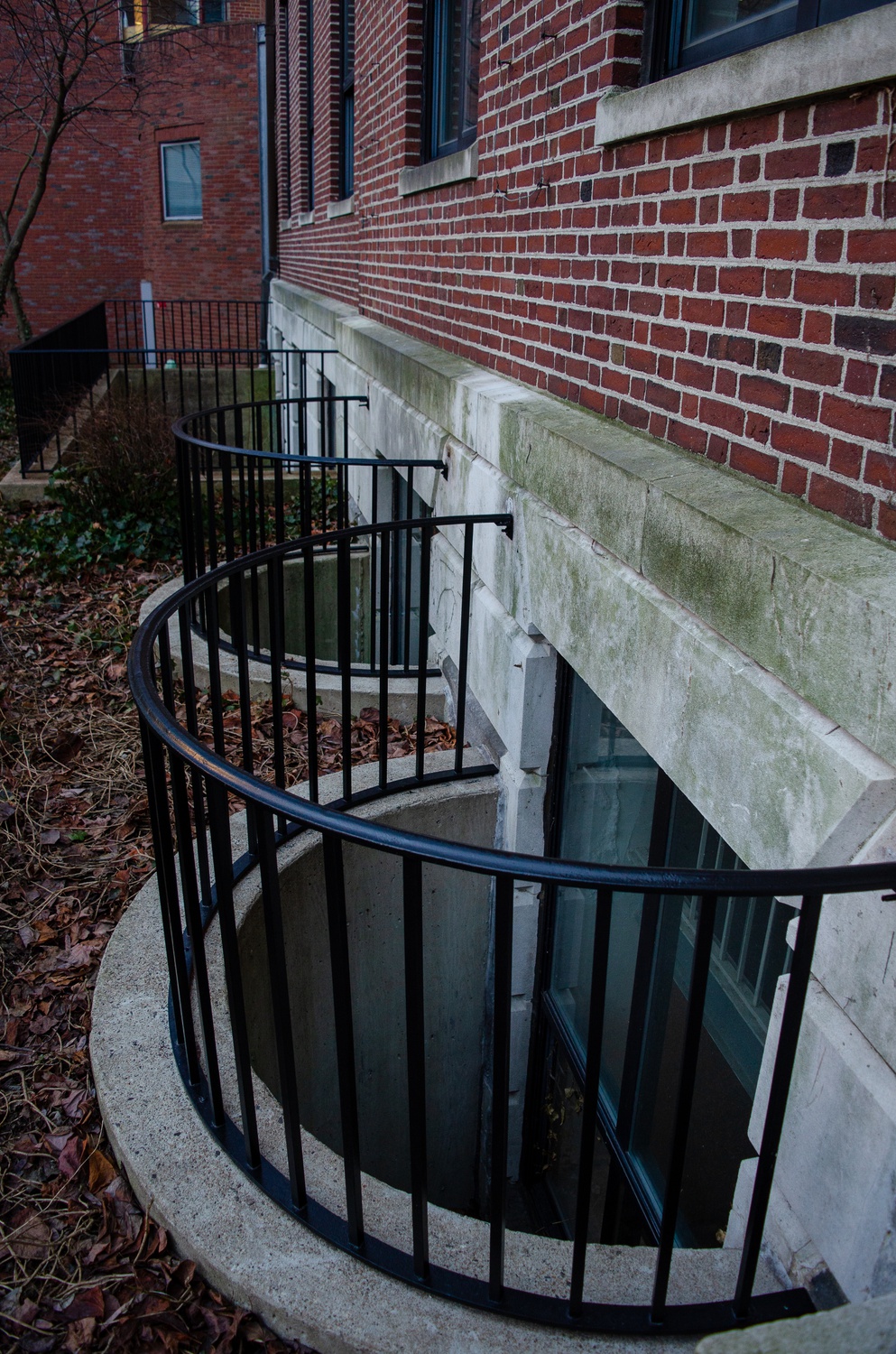
Research carried into the third floor of the now-demolished Wolcott Gibbs Laboratory, where they continued tests in a “glass-enclosed room-within-a-room” that allowed them to burn incendiary materials and bombs without the risk of wind. They cut a hole into the roof and installed a powerful fan that sucked smoke out of the room, so they could run experiments back to back.
All the while, the duo maintained an air of utmost secrecy, taking great care to conceal their work from friends, colleagues, and pedestrians. They performed their first burns in the outside window well of the corner room, “since this was shielded from observation from the street,” and only corresponded with select military and government officials.
At the end of a day working in the lab, Fieser “would come home with lots of smudges on his clothes from doing various kinds of burning tests,” Neer says.
Fieser wrote that his appearance often “presented a puzzle to my wife Mary.” Though she would co-author 36 research papers with him and collaborate on six books, he withheld his napalm research from her. Eventually, he wrote, “she was let into the secret a few weeks later when she met Major Rambaut at the airport and he asked: ‘How is your husband’s incendiary project progressing?’”
The six-man group remained intact for four years, during which Fieser gave up his teaching and ordinary research but continued to receive his regular salary from Harvard.
“My services were contributed by Harvard, off the record, to the war effort,” he wrote.
The NDRC contract on just the incendiary project totalled $359,125.
On Feb. 14, 1942, Fieser and his team reported to NDRC development that a powder made with “aluminum naphthenate” and “aluminum palmitate” could be stirred with gasoline at room temperature to produce strong, tough, and flammable gels. Fieser named the substance “napalm.”
The researchers arrived mid-morning at what is now Ohiri Field on a directive from the Chemical Warfare Service to test their findings. It was July 4 — America’s first Independence Day since it joined World War II.
Everything was prepared by the time they got there. University workers had dug a circular hole into the field 60 yards in diameter, and two fire trucks from the City of Cambridge filled it with water. As firemen and groundskeepers looked on from the sidelines and players hit volleys in the adjacent tennis courts, Fieser and a train of eight assistants towed a 70-pound napalm bomb to the center of the pool, bolting it on top of a metal stand.
Fieser flipped a switch, and “a spectacular, billowing, 2,100-degree-Fahrenheit cloud arose over the field,” Neer writes in his book.
Napalm was born.
‘U.S. Out of Southeast Asia; Butchers Out of Harvard!’
At 9:30 a.m. on Oct. 25, 1967, Harvard and Radcliffe students began a sit-in at the James Bryant Conant Laboratory to block the visit of job recruiter Frederick Leavitt from Dow Chemical Company — the principal supplier of napalm for the U.S. military.
They had been notified of the demonstration from leaflets that asked, “Is it in the interests of chemistry students — or of any students — that war profiteers like Dow prostitute science for repression and murder?” Students for a Democratic Society co-chair Jared Israel ’65 had called for massive student opposition to the recruiter’s upcoming visit, citing “university complicity with the war.”
Dow was complicit in war crimes and genocide, they argued. It had no right to be here at Harvard.
When Ronald E. Vanelli ’41, the director of the chemical laboratories, demanded they disperse, the students refused. But they didn’t know that Leavitt had already relocated to the nearby Mallinckrodt Hall, leaving a decoy businessman behind in his place. No interviewees would show up to Conant Laboratory that day.
At 11 a.m., the group discovered the fact after sending scouts to find Leavitt. They ran, stomps of feet permeating the Cambridge air. Within seconds, Mallinckrodt was filled with the impassioned shouts of angry, dogged demonstrators. They would trap Leavitt — who was in the midst of an interview when they arrived — in Room M-102, for the next seven hours.
At one point, Vanelli attempted to free Leavitt. “They stepped on and over three tiers of seated demonstrators but were then met by rows of students standing, with arms linked,” according to a 1967 Crimson article.
The students interrogated Leavitt about Dow, napalm, and Vietnam for five minutes. SDS organizer Michael S. Ansara ’68 told Leavitt he couldn’t leave until he signed “a yellow sheet of paper bearing the hand-scrawled pledge: ‘I agree to stop interviewing on the Harvard campus and not to return for that purpose.’”
Ultimately, Leavitt did not sign the paper, and retreated back to the conference room.
Throughout the day, nearly all of Harvard’s administrators convened at M-102. Meanwhile, the crowd grew to more than 300 students, despite rumors that the University was going to use police force to remove them.
Blocks away in Harvard Square, volunteers distributed leaflets that featured an image of a child with horrific burns, reading: “CAN YOU SUPPORT NAPALM used against CHILDREN?”
At 6 p.m., students finally voted to release Leavitt after Harvard College Dean Frederick L. Glimp ’50 promised them that the Faculty of Arts and Sciences would further discuss whether Harvard should discriminate between who could recruit its students. The demonstration made national headlines and sent shockwaves through the Harvard community, with four professors writing statements of support for the students and others calling for their arrest.
“The substance is intended to burn out jungle overgrowth, but it falls all too often on Vietnamese civilians,” The Crimson opined the next day, asserting the protesters’ actions were justified. “Napalm — and the company that makes it — have become symbolic of a war that tries to destroy communism by bombing people.”
But not all supported the protest. In a dissent, 14 Crimson editors wrote that the demonstration was “the wrong way to peace” and “reflects a shift in the protest movement away from rational dissent, and into the realm of resistance and violence.”
Although Leavitt’s ordeal was recorded as the longest of any Dow recruiter during the fight against napalm, Harvard wasn’t alone in protesting the company.
Dow reported that during the 1967-1968 academic year, 46 of their 178 visits to colleges across the country and 133 of their 339 interview events were interrupted. The reputational damage cost Dow billions of dollars, and they stopped manufacturing napalm for the military in 1969.

The Mallinckrodt protest against Dow was just one in a torrent of Harvard protests against the whole of the Vietnam War. The day prior, more than 500 people gathered in Harvard Yard for its largest rally in years to oppose U.S. involvement in Southeast Asia. The volatility of campus activity surrounding the war carried for years, and in 1969, hundreds of students occupied University Hall as some 400 police officers stormed the building.
Some students felt that there was an “underrepresentation of pro-war sentiment on campus,” the Crimson reported, and so Students for a Just Peace organized a “counter teach-in” lecture given by five pro-war speakers on March 26, 1971.
Daniel Pipes ’71, who helped plan the SJP lecture in support of U.S. Vietnam War involvement, says that a “revolutionary fervor” ignited on college campuses nationwide.
That fervor was reflected at Sanders Theatre when anti-war protestors under SDS came to disrupt the lecture. As opposing groups clashed in a chaotic uproar, chants of “U.S. out of Southeast Asia; butchers out of Harvard!” filled the space.
James P. Stodder ’71, an SDS organizer, was one of the students opposing the lecture. In an interview, Stodder says he was motivated by “just some innate feeling of sympathy for people in pain and for people being oppressed for no good reason.”
After the protest, Stodder and nine other students were brought before the Committee on Rights and Responsibilities, a Harvard-created court, on charges of disruption. Harvard later retracted Stodder’s financial aid, forcing him — without a way to pay — to withdraw after his junior year.
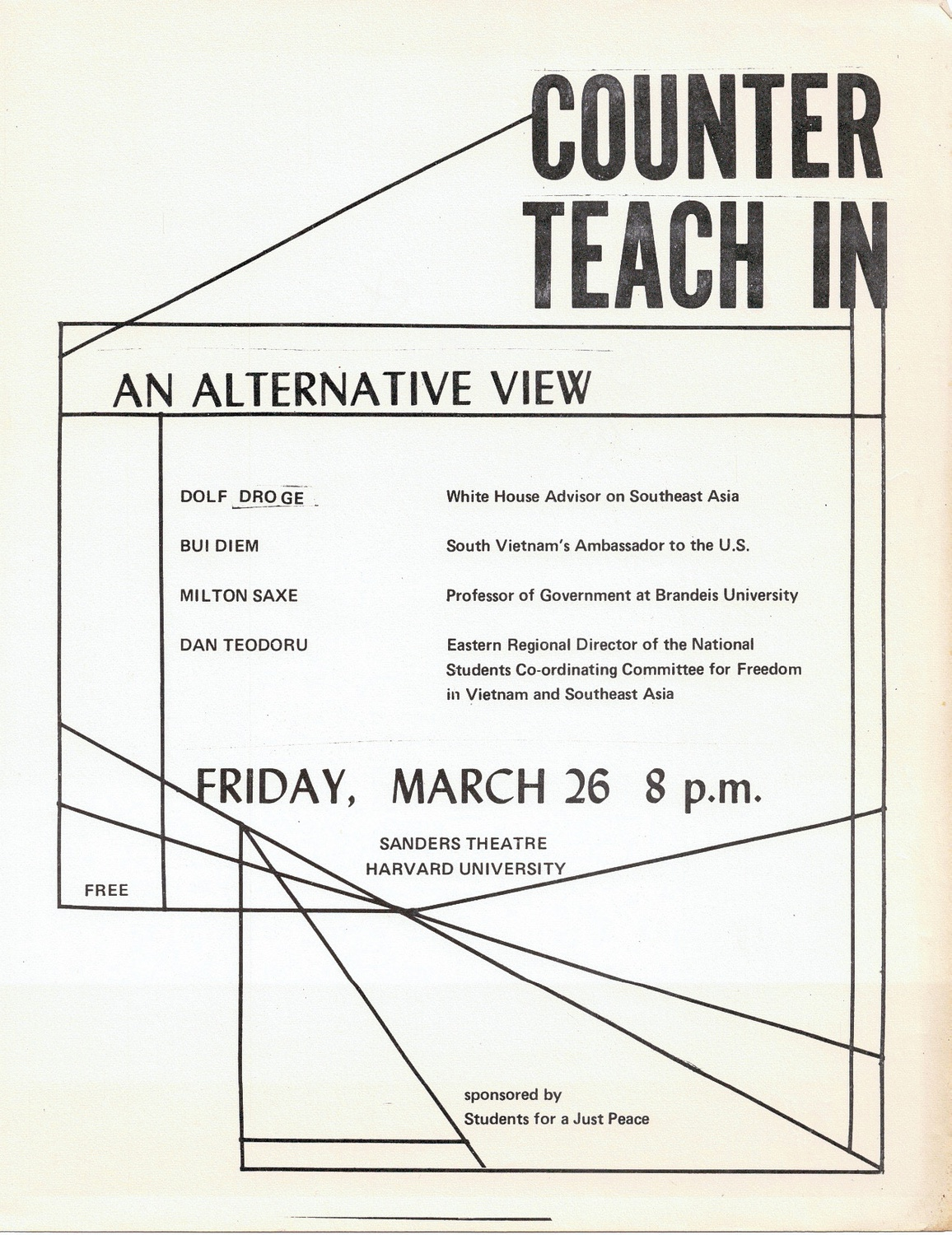
“Looking back, there isn’t much I would have done differently,” Stodder told The Crimson last year.
Ira G. Helfand ’72, another SDS organizer, was arrested in 1972 while participating in protests against Harvard. Helfand calls Harvard’s disciplinary actions toward student protesteors “outrageous.”
“I thought that this was an institution that was supposed to be safeguarding the values which we all share of freedom, democracy, justice,” Helfand says. “It was instead supporting some very vicious governments around the world.”
Helfand adds that Harvard “was deeply involved in planning and executing” the Vietnam War. “There was a real shock associated with that, and a sense of betrayal,” he says.
Nicholas B. Lemann ’76, who was president of The Crimson, says that “a very significant opinion among undergraduates” was that Harvard shouldn’t do any work under contract with the Department of Defense at all.
In “a never-ending procession of moral challenges,” Lemann says, the institution’s ties to the development of the atomic bomb and the Reserve Officers’ Training Corps came under fire, leading to the ROTC program’s ban from campus in 1971. Harvard has since lifted the ban, opening an ROTC branch in 2012.
“There’s always a conversation as far as I can tell, at Harvard, about Harvard’s moral place in the world,” Lemann says. “Harvard is not a very ivory tower-esque institution. It’s deeply, deeply implicated in pretty much everything that’s happening in the world.”
Eventually, Fieser’s heroic reputation also got caught up in the waves of anti-war sentiment. Up until public opinion started to turn against the Vietnam War, Fieser was widely congratulated for his work on napalm. In 1948, President Harry Truman awarded Fieser a certificate of merit for “outstanding fidelity and meritorious conduct in aid of the war effort.” Soldiers sent him letters claiming that his invention had saved their lives.
But by the latter half of 1967, Fieser’s reputation was as contentious as the protests boiling across the United States.
Fieser “received letters raising questions about his involvement with napalm and about its use in Vietnam,” The New York Times reported in December 1967. “He said some of the writers were saying, in effect, ‘We thought you were a great guy, and now you’re a bum.”
‘Pain for the Rest of My Life’
“I suffered with the ugly scars and the pain for the rest of my life,” Phan Thị tells me, recounting the napalm attack that desecrated her village 51 years ago. Her voice shakes as she speaks. “Why me?”
Phan Thị was nine years old when she and her family hid at a Cao Đài temple in Trảng Bàng, Vietnam after the war broke out. They had remained there with villagers and soldiers for three days when roars of planes came within earshot. One soldier advised them to run away, telling them that the temple was going to be bombed, so they rushed outside.
Phan Thị recalls watching a plane fill the sky above her and its deafening scream. Then, she heard four bombs hit the ground. She didn’t know it at the time, but those bombs were filled with napalm.
“Suddenly I saw the fire everywhere around me,” she recounted in a Boston Globe interview. “At that moment, I didn’t see anyone, just the fire. I saw my left arm burning. I used my right hand to try to take it off.”
But napalm sticks to its victims as they burn. It seared off Phan Thị’s clothes, got into her eyes, and disfigured more than a third of her body. It scorched away her pores, leaving her unable to sweat.
As Phan Thị ran down a dirt road, chunks of flesh melting off of her, she screamed, “Nóng quá, nóng quá!” (“Too hot, too hot!”). Phan Thị ran until she passed out. Feet away, Associated Press photographer Huỳnh Công “Nick” Út, clicked his Leica camera to capture the scene that would shock the world.

The photograph of Phan Thị with her hands outstretched, face contorted in agony as a thick cloud of smoke rises from her bombed village behind her, appeared on the front pages of newspapers around the globe. Titled “The Terror of War,” Út’s photo won a Pulitzer Prize and became one of the most prominent and haunting photos of the 20th century.
Wide circulation of the photo played a significant role in bolstering the anti-war movement and turning public opinion against the use of napalm, which had previously been considered an effective and useful tool in carrying out war efforts. Some also credit the photo with hastening the withdrawal of American troops from Vietnam.
Phan Thị says that napalm forever changed her life. The tragic attack killed two of her cousins, covered her in permanent scars, and hospitalized her for 14 months. To date, she has undergone 17 surgeries to treat her injuries.
“You don’t grow out of the scars, physically or mentally,” Phan Thị wrote in a New York Times guest essay last year. “Napalm sticks to you, no matter how fast you run.”
Phan Thị confides that she was victimized not once, but twice; first by the napalm that gave her third-degree burns and again by the attention brought on by the photo’s popularity.
When Phan Thị was 19 and pursuing a career in medicine, the Vietnamese government identified her as the child from the iconic photo. They pulled her out of school to exploit her fame, arranged interviews with foreign journalists, and made her give talks against the evils of capitalism. Subject to severe government surveillance, Phan Thị lost all of her friends and spiraled into a deep state of bitterness and depression.
“I lost my freedom. I lost my dreams. I lost my future,” Phan Thị says. “I hated everyone around me. I hated all those people who caused my suffering.”
She stood one day next to a speeding train of traffic in Saigon, contemplating whether she should “jump into the cars and die.” It would take years before she found peace, prayer, and eventually, complete forgiveness — of the pilot who bombed her village to Fieser and his team.

Today, Phan Thị is 59. She lives in Canada, has two children, and founded an organization, the Kim Phan Thị Foundation International, to provide psychological and medical aid to child victims of war. As a UNESCO Goodwill Ambassador, she gives dozens of lectures each year.
“Every one of us in this world can learn how to live with love, with hope and forgiveness,” Phan Thị says. “That little girl in the picture of napalm? She can do that.”
But for Phan Thị, forgiveness is not “agreeing with the evil thing.”
“Not at all,” she says. “They destroyed people.”
Between 1963 and 1973, U.S. forces dropped 388,000 tons of napalm on Vietnam. South Vietnamese forces also took advantage of napalm’s power and conducted bombing campaigns — including the attack on Phan Thị’s village.
“Napalm wounds were as common in Vietnam as bayonet wounds had been in the First World War,” biographer Denise Chong wrote in The Guardian. Doctors didn’t anticipate treating its victims as their probability of death was higher than needing medical aid, according to Chong.
While napalm’s use in Vietnam took place more than 50 years ago, survivors like Phan Thị are still experiencing the pain caused by the weapon. Its image and impact live on.
No Guilt
Three weeks after Fieser tested the first napalm bomb on the Harvard College soccer field, Harvard Business School Dean Donald K. David received a letter of complaint.
“Irritating vesicant fumes clung to that corner of the field for several days,” wrote U.S. Navy Captain K.C. McIntosh, explaining that the area was also a drill field for the Navy Supply Corps School. “Effects of these fumes were still visible in the eyes of one officer six days after exposure. In addition, some seventeen officers required treatment during the night.”
Fieser wrote to McIntosh, asserting that his invention wasn’t responsible for the injuries: “I find it difficult to believe that there could have been a direct connection with the disabling of some of your personnel.”
Though telltale signs of napalm’s potential to cause lethal harm arose over the course of Fieser’s research efforts, which were classified as an official project of the U.S. Department of War, Fieser maintained that he didn’t anticipate its deployment on people beyond its initial use to clear buildings and structures.
"I couldn’t foresee that this stuff was going to be used against babies and Buddhists,” he told Associated Press reporter John Lannan in a 1967 interview.
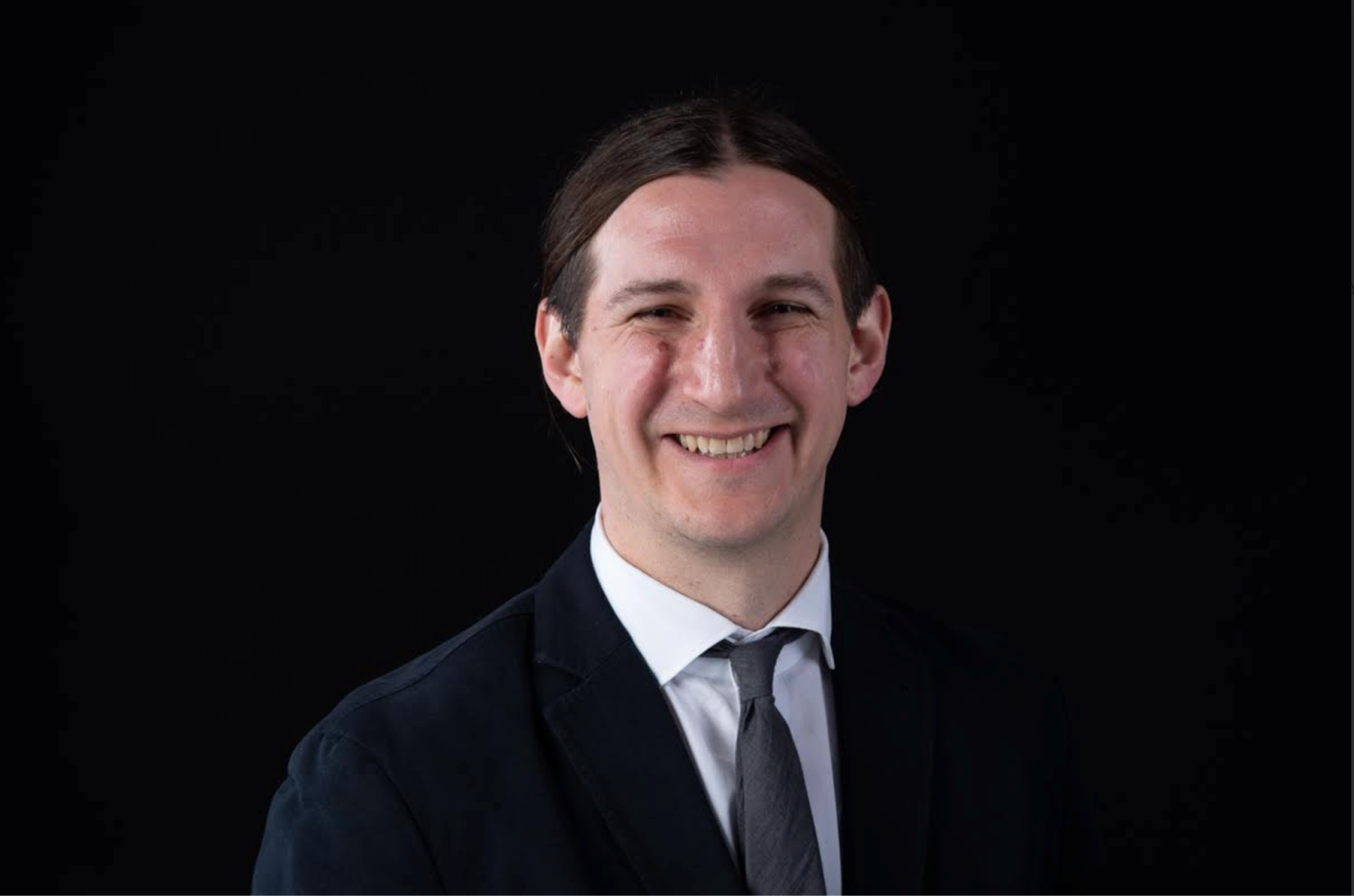
“I think that’s total bullshit,” says Zach B. Nowak, a Harvard history lecturer who’s writing a book on the College’s 385-year-legacy. “That Fieser invents a jellied form of gasoline and can’t imagine how it could be used I find very difficult to believe.”
“The idea that after World War I there isn’t going to be massive collateral damage to civilians, for any sort of war thereafter — give me a break,” Nowak says.
As I inspected page after page of Fieser’s extensive notes detailing the wartime work he conducted in his Harvard lab, I rarely came across mention of ethical doubt. In an account on poison gas experiments he did for the NDRC, Fieser wrote that although its use “seemed to me inhumane,” he “swallowed my personal feelings and engaged a new group of men to start research.”
For napalm, though, Fieser felt fewer qualms: “It was better than working on poison gas,” he said.
It’s unclear whether Fieser genuinely failed to predict napalm’s future application against civilians or simply chose to ignore the possibility. The dangerous and oftentimes volatile nature of his work inclined me, like Nowak, to suspect the latter.
One WWII project, Project X-Ray, stood out to me as especially morally dubious: a post-Pearl Harbor plan to transform millions of bats into napalm-armed suicide bombers. Fieser designed the device at the heart of the project — a tiny 17.5 gram napalm bomb with a time-delay mechanism to be strapped to each individual bat.
The bats, which were refrigerated to force hibernation, would be “flown over Japanese cities at night and parachuted down into warm-air,” Fieser wrote. At specific altitudes, they “would awaken and carry the bombs onto or into highly combustible Japanese houses.”
Japan’s major cities, whose buildings were commonly built with paper and wood rather than concrete, would be reduced to ashes in a matter of minutes.
In Utah’s Great Salt Lake Desert, the crew ran bat bomb tests in a mock village of German and Japanese houses, furnished to the finest details. From chopsticks on the tables in the Japanese houses and children’s toys scattered on the floors to replica tatami mats and bedrooms with authentic clothing in the closets, the study required more than 750 pieces of furniture and 700 cloth components.
But despite $30 million of investment in today’s dollars, years of work, and the sacrifice of millions of bats, the project was terminated — likely because the atomic bomb was chosen as a quicker means to end the war.
As I examined images of the model village, a knot formed in my stomach. The plan obviously targeted people’s homes, not factories — test images even included Japanese people sleeping in them. It seems impossible to me that Fieser could have worked on this project without considering that its impact may extend to people. How could any line be drawn between building and person — between roof, furniture, and skin?
Nevertheless, Fieser distanced himself from the impacts his invention had on the world. Although he later condemned the U.S. military’s use of napalm against civilians, Fieser expressed no remorse for having contributed to its creation.
“The person who makes a rifle… he isn’t responsible if it is used to shoot the President,” he told the Sunday Herald during his retirement in 1967. “I feel no guilt, and I would do it again if I were called upon.”
Fieser asserted his accountability ended when napalm exited the laboratory.
“I don’t know enough about the situation in Vietnam. It’s not my business to deal with the political or moral questions,” he said in an interview with The New York Times in 1967. “Just because I played a role in the technological development of napalm doesn’t mean I’m any more qualified to comment on the moral aspects of it.”
“I suspect that they thought they were developing something that would help to defeat the Nazis who were viewed as sort of the supreme evil. They probably didn’t imagine that 30 years later, napalm would be used to kill innocent children in Vietnam,” Helfand says.
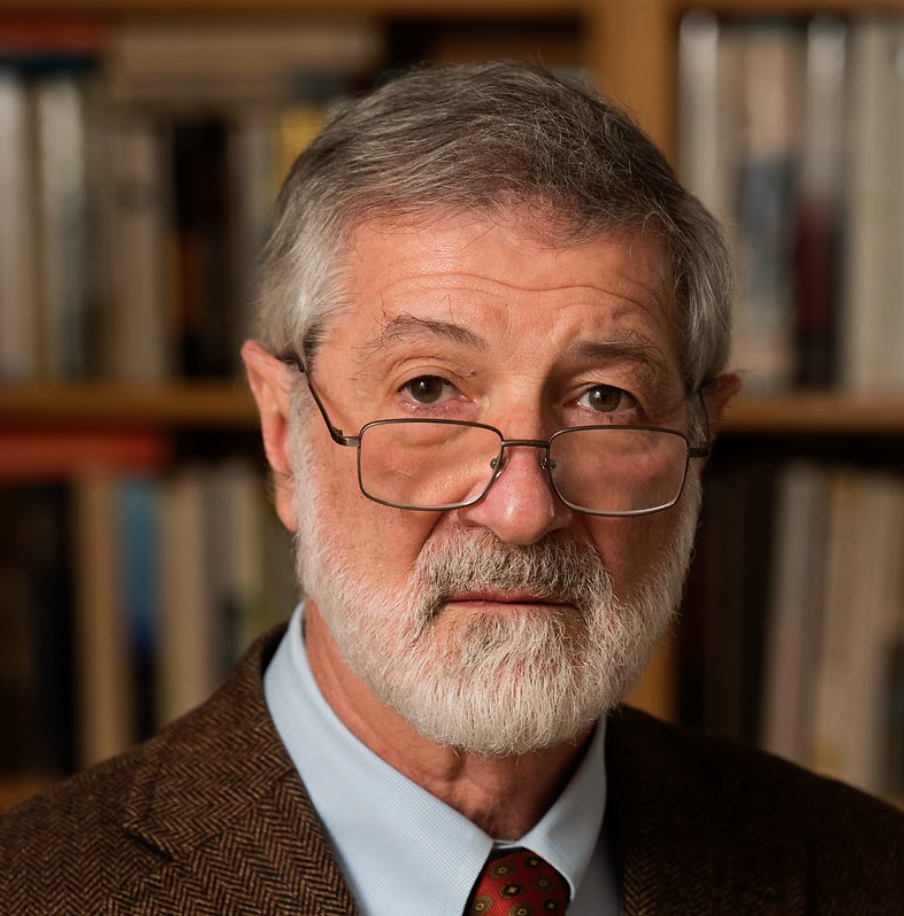
After graduating from Harvard, Helfand worked on issues surrounding technology and ethics, helping found two organizations that won the Nobel Peace Prize. Helfand’s work, which focuses on nuclear disarmament, considers how the world should grapple with the ethical problems raised by weapons like napalm.
“Society needs to figure out how to create rules and governing bodies that regulate these technologies in ways that do not cause harm,” Helfand says. “We have consistently shown a cleverness in our technology that is not matched by wisdom in our decision-making.”
While Helfand sees napalm as inherently problematic and insists that some weapons “serve no useful purpose and should be destroyed,” Phan Thị believes that the true harm lies within the people who deploy the technology.
“The gun itself is okay. If you use it for good, it’s good,” Phan Thị says. “The one who uses that to kill people, to destroy people, to cause people’s suffering — that is bad, is wrong.”
Regardless of Fieser’s intent, he helped create a world with napalm in it. How much can be blamed?
‘This is the Middle of the Living Room’
After that September day when I learned that napalm set Ohiri Field ablaze, I’ve found myself returning countless times, not exactly knowing why. I’d make excuses to walk through it, walk by it, walk around it: Let’s pay a visit to my friend at the Business School. I need groceries from the Trader Joe’s across the river. Today seems like a great day to roller skate at the park. Sometimes, I’d just stand there, wanting to do something with the knowledge that it was in this spot the weapon that ignited the world took its first breath.
A month later, I stared again at the grassy field — this time through the foggy window of the 66 Bus to Nubian. From the corner of my eye, I saw something I’d never seen before: an aluminum sign nailed carefully to a utility pole seven feet off the ground, too high up to catch the attention of most people who walk by it.
In bright red text “Napalm Test #1, July 4, 1942” was printed, and a bold arrow pointed beyond the chain-link fence, to the field.
This is the first, and only, physical marker on campus that shows the detonation of napalm bombs at Harvard.
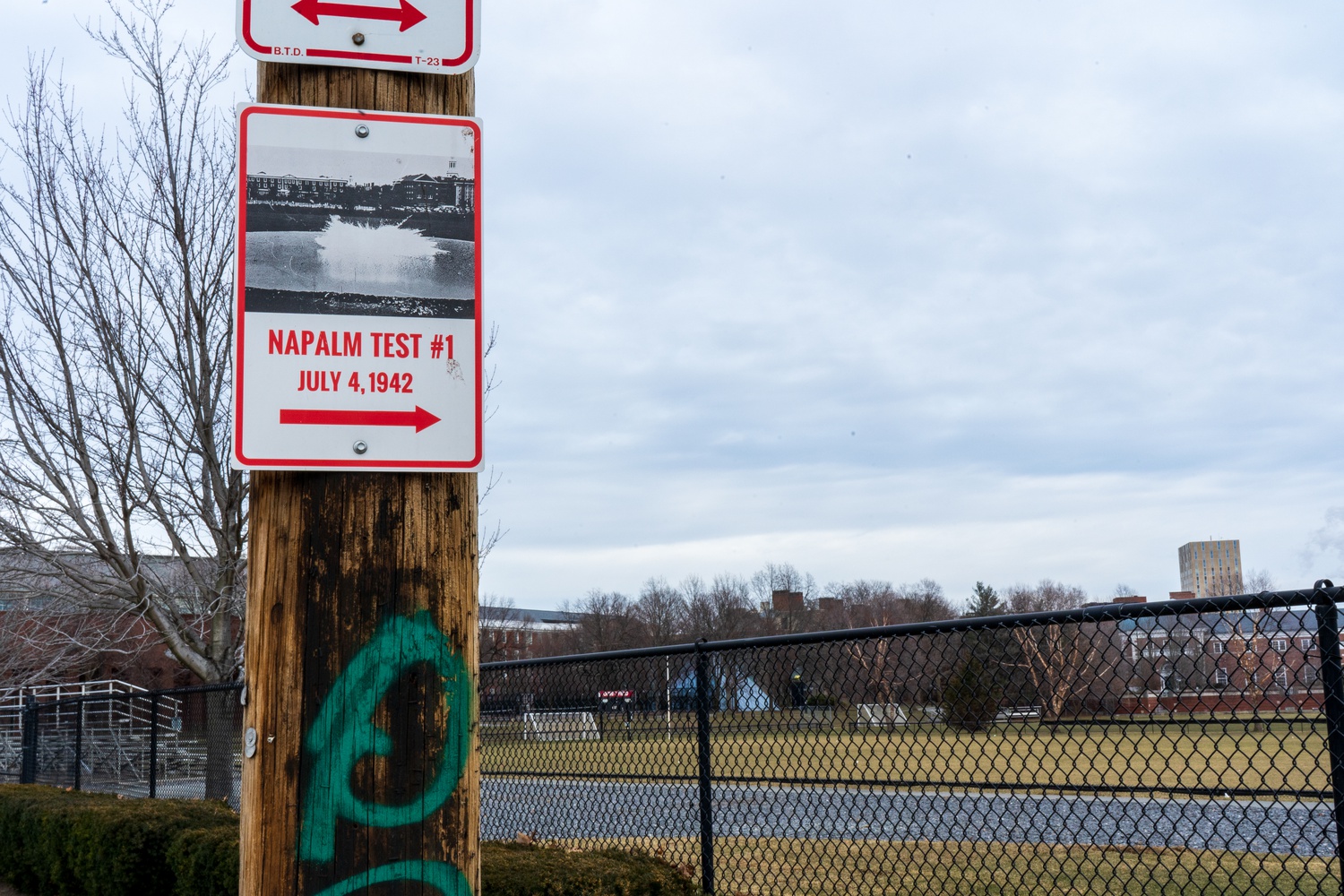
I spoke with the two local artists who put up the marker — Yolanda He Yang and Ross M. Miller ’77 — and asked them about their efforts to make napalm’s story known. Maria Salim, another Boston-area artist, conceived and designed the sign with Miller.
Miller, a Cambridge resident whose art studio is located in Allston, says that he has passed by Ohiri Field for years. He didn’t think much of it until — as he was driving along North Harvard St. — a discussion of napalm on the radio mentioned the field, and he “stopped in my tracks.”
Miller was shocked by the proximity of the napalm tests to Harvard, which he calls the “living room” of Allston and Cambridge.
“This feels like my home. This happened on my home landscape. Oh my gosh,” he says. “This is the middle of the living room. It’s in the middle of the house.”
Both Yang and Miller say they are bewildered at the University’s and city’s lack of recognition and how little physical evidence there was on the field.
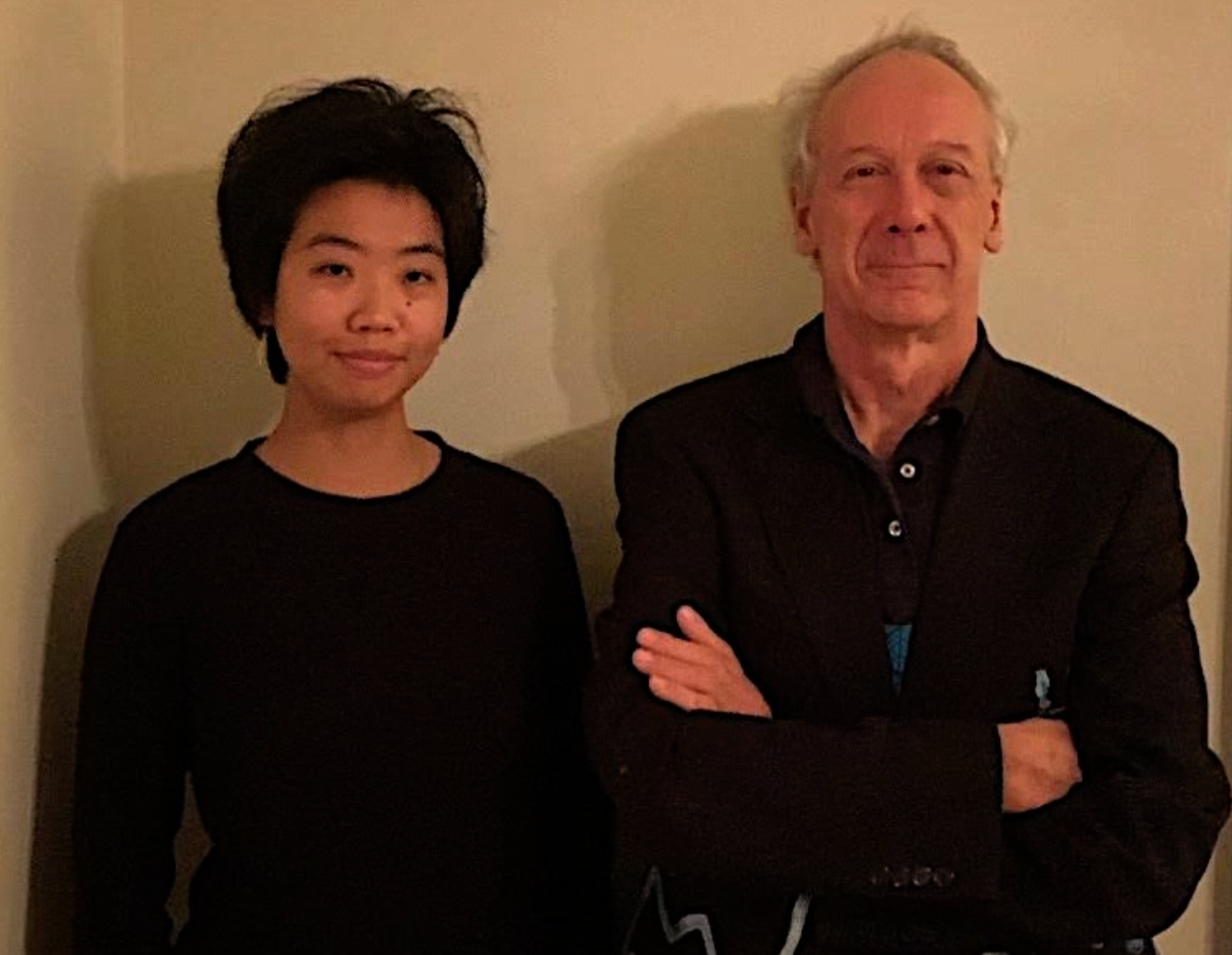
“Nobody would recognize what happened here,” Yang says.
“It was a very physical first action in the story of napalm, and there’s nothing telling the story,” Miller adds.
Neer also agrees that larger acknowledgment of napalm’s history is sparse.
“The most striking thing to me about all of the work that I did on napalm in general was actually what I call the silence,” Neer says.
“You can go to Widener Library and look for nuclear weapons and find shelves and shelves of books,” Neer says, rattling off a list of munitions, but “there’s really no information about napalm.”
So, Yang and Miller put the sign up. “Our intent is to present (evocative) evidence, in the most direct way,” Miller wrote in an email.
Salim and Miller modeled the sign after a typical warning or no parking sign. “The intent is for the sign to blend in, almost invisibly normal, until the shock of closer observation,” Miller wrote. A QR code sticker on the back of the sign, designed by Salim, links to more information about napalm’s origins.
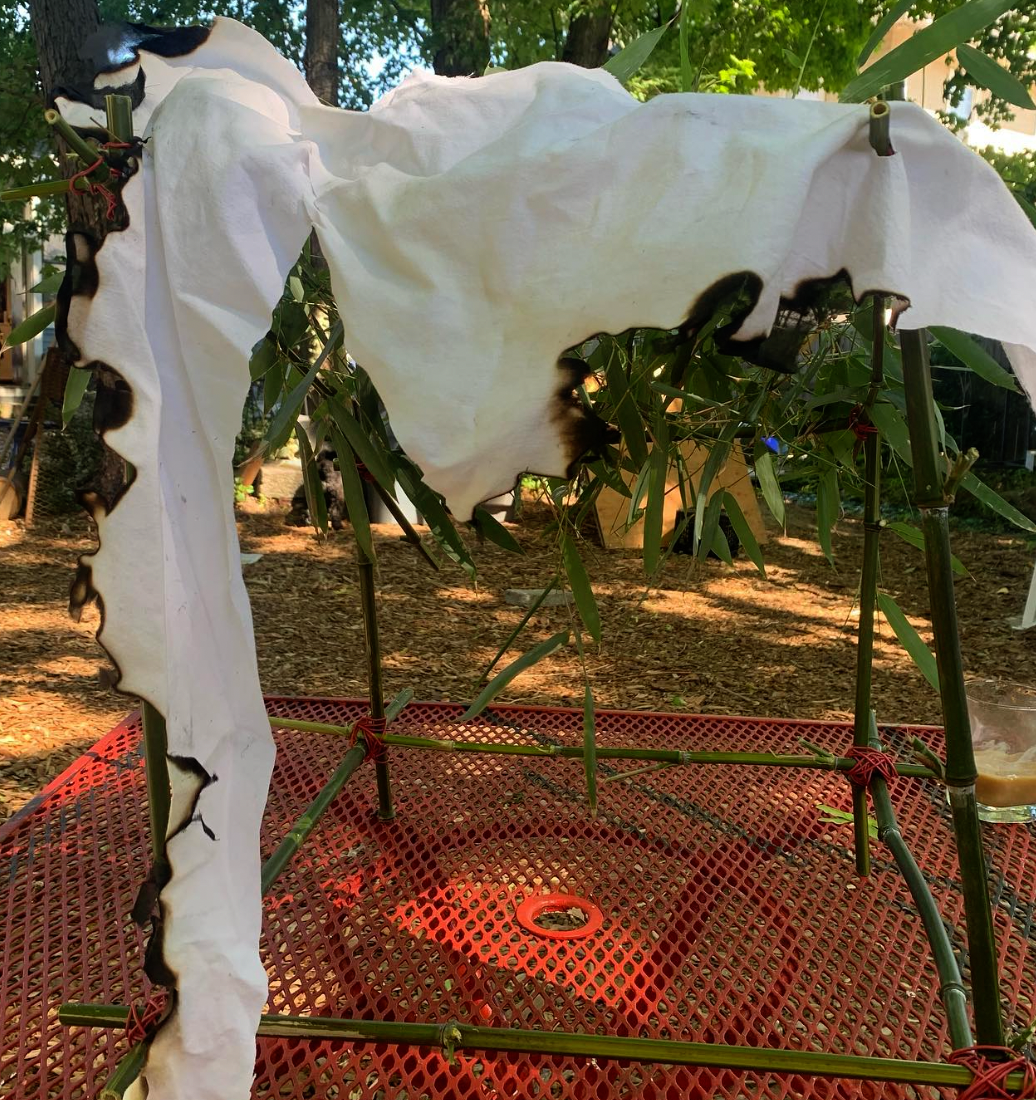
Yang and Miller also also put up a second sign by the Business School, which was taken down soon after being installed. They do not know who took it down.
The pair have collaborated on other projects related to napalm as well, including a “non-destructive sculptural installation,” a public demonstration planned for July 4, 2022 — the first napalm test’s 80th anniversary.
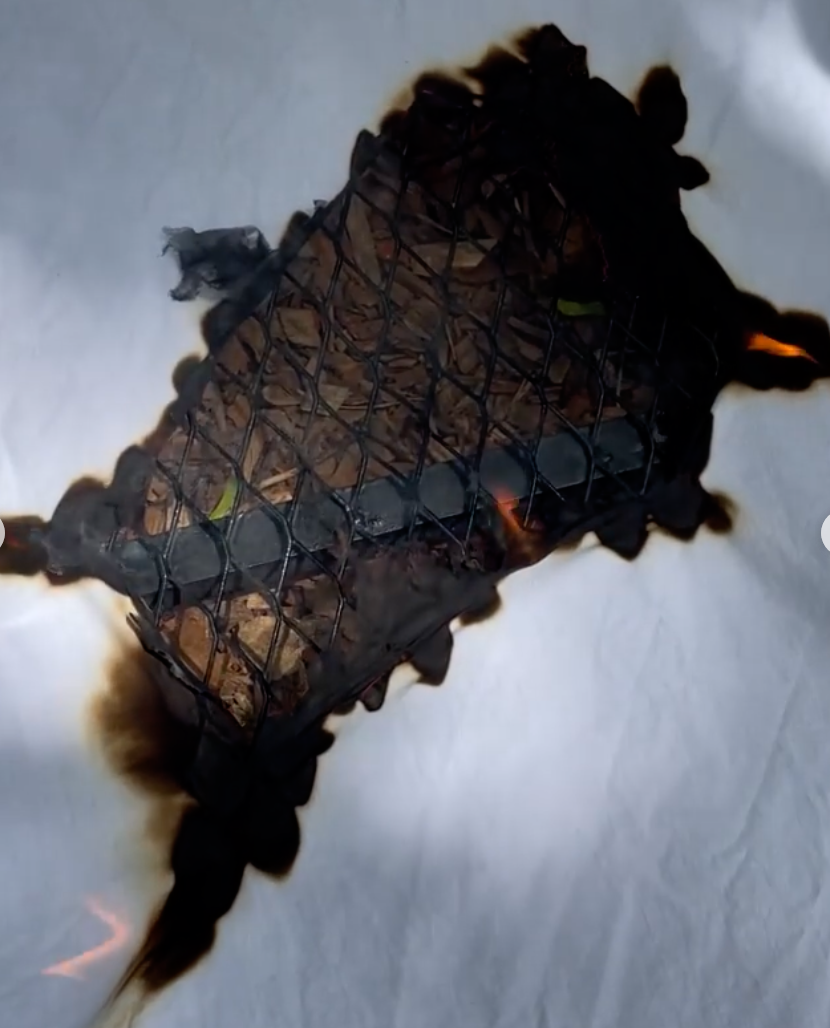
In the months leading up to the public demonstration, Yang and Miller attempted to recreate the original napalm tests on a smaller scale to allow the public to experience and understand what happened at Ohiri Field 80 years ago. The event would offer people “an opportunity to connect themselves with history,” Yang says.
“We’re still focusing on this idea of observing, of witnessing, of offering a condition where somebody can experience something physically,” Miller says.
They, along with three other artists, used Yang’s backyard to experiment with a flamethrower and materials that included steel rods, bamboo, paper, and fireproof fabric. They set fire to bamboo structures that resembled German and Japanese architecture — copying the Project X-Ray tests — and planned to transform the entire field into a place “that could talk.”
The demonstration never happened due to a host of bureaucratic and logistical obstacles, but plans for July 4, 2023 are underway.
Yang and Miller hope their napalm projects help deepen connections between Harvard and the Boston community.
Yang regularly takes the 66 and is able to check on their remaining sign: “Every time I see it — ‘Oh good, it’s still there.’”
The Good Guys
“Holy shit,” Nowak says when I show him the photographs of the first napalm blast. “It doesn’t make me feel good. It’s horrible to see those pictures.”
“On the shield of Harvard it says ‘Veritas,’” he says. “It doesn’t say ‘warmaking.’”
Helfand echoes the disillusionment.
“We had been told the U.S. were the good guys and that places like Harvard were the good guys,” Helfand says. “And here, we found them behaving in ways that were completely reprehensible.”
“The fact that napalm is made at Harvard is not some radical disjuncture. It fits in with the larger picture,” Nowak says, pointing to centuries of collaboration between Harvard and the U.S. military.
But the story of napalm’s birth at Harvard, he adds, illuminates larger patterns within Harvard’s history, from war profiteering to the military-industrial complex.
“So is it worth telling? Yeah. 100 percent. 100 percent,” Nowak says.

After seeing the field where napalm first exploded, I wanted to visit the labs where the chemical was synthesized. I thought that by being in the place where napalm existed for the first time, its history would feel more concrete.
So, with Neer, I went looking.
We explored the renovated halls of Converse, navigating a maze of pipes in the basement in search of the exact two rooms where Fieser worked on explosives research. Surely there’d be some evidence of Fieser’s work here. Perhaps a room named after him? Or maybe a plaque commemorating his inventions?
There was nothing.
Correction: March 1, 2023
A previous version of this article incorrectly stated that Yolanda He Yang and Ross M. Miller ’77 conceptualized the “Napalm Test #1” marker. In fact, Maria Salim and Miller designed and conceptualized the sign.
Clarification: March 1, 2023
A previous version of this article stated that Phan Thị Kim Phúc recalled a U.S.-made plane bombing her village. To clarify, this attack was carried out by South Vietnamese forces.
—Staff writer Ryan H. Đoàn-Nguyễn can be reached at ryan.doannguyen@thecrimson.com. Follow him on Twitter @ryandoannguyen.
